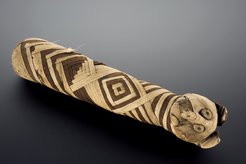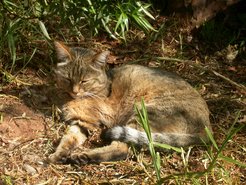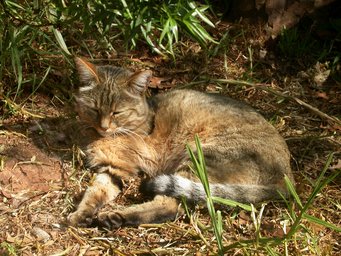The Complex Domestication of Cats
A group of scientists has traced the domestication of cats by analyzing the DNA of ancient felines, discovering two major waves of domestication that left their mark in our modern housecat.

In order to trace the origins of the modern domestic cat, the researchers analyzed ancient cat remains from Europe, North and East Africa and Southwest Asia, spanning from the Mesolithic, approximately 9000 years ago, to the 19th century AD. The remains of over 230 cats, some of them mummified cats from Egypt, were examined and their mitochondrial DNA was analyzed. Mitochondria are the energy-producing machinery of the cell. These mitochondria have their own DNA, which is separate from the nuclear DNA of the host. Mitochondria are inherited from mother to child and can thus be used to trace maternal lineages and population splits.

By analyzing the cats’ mitochondrial DNA, the scientists found two major waves of domestication that contributed to today’s cats. The first major domestication event was probably in the Fertile Crescent as long as 7,500 years ago, from wildcats originating in Anatolia. These cats were likely attracted to early human settlements due to the presence of rodents, which were themselves attracted by human food stores. Cats can then be seen moving with human populations as early as 5000 to 6000 years ago, as farmers spread from the Near East into Europe, and also with seafaring communities. Cats appear to have traveled along maritime trade routes, as well as with military expeditions, which is also supported by historical evidence. The scientists note that, “in medieval times it was compulsory for seafarers to have cats onboard,” to combat the rats and house mice that were a frequent pest on ships.
As mentioned above, cats likely underwent several domestication events, and also interbred with wildcats, both F. s. lybica and other subspecies, including F. s. silvestris, the European wildcat, at various times. The second major wave of domestication, however, occurred in the Greek and Roman periods, when a fad for Egyptian cats led to a movement of domestic cats descended from the North African F. s. lybica to Europe, which greatly increased their representation in the overall domestic cat gene pool. These Egyptian cats continued to be spread by humans throughout Europe, reaching Viking ports in the Baltic Sea and trading ports in Iran by the 8th century AD. This Egyptian cat heritage persists in domestic cats to the present day.

It seems that early in the domestication process, humans were selecting cats for behavioral traits. However, by medieval times, it seems that cats also began to be bred for their appearance. The researchers found the first evidence of a “tabby” pattern that contains spots as well as stripes dating to this time period in the Ottoman Empire in Southwest Asia. Wildcats are often striped, but do not have the distinctive spots that domestic tabby cats sometimes have. “These data suggest that whereas cat domestication may have been driven in its early stages by behavioral features, as indicated by recent genomic data, distinctive physical and aesthetic traits may have been selected only recently,” the researchers state. The appearance of spots began between 500 and 1300 AD, and became more common in the Ottoman Empire and Europe after that time.


